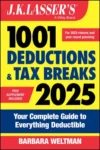No Separation from Service Penalty Exception for IRAs
When a worker at Home Depot retired at age 55, he transferred his 401(k) to an IRA. The next year, when he was 56 years old, he took a distribution from the IRA to pay for living expenses. He received Form 1099-R reporting the distribution and he included the income on his return. He did not report the 10% early distribution penalty, which usually applies to distributions before age 59½. He argued that the penalty did not apply because he was 55 years old when he separated from service and no longer worked for his former employer when he received the distribution.
The Tax Court rejected his argument (John A. Catania, TC Memo 2021-33). The separation-from-service penalty exception applies only to qualified retirement plans, such as a 401(k) plan; it does not apply to an IRA. Had he kept the funds in the company’s plan, he could have avoided the penalty.
The lesson: Those leaving a job after reaching age 55 but before age 59½ may want to leave retirement money in the company plan until they attain age 59½. If they should need funds, they can take penalty-free distributions after age 55.
Child and dependent care credit
A credit of up to 30% based on certain care expenses incurred to allow you to work.



